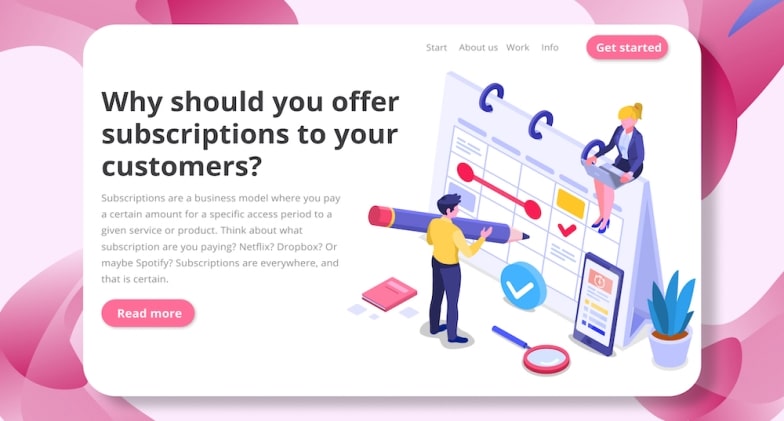It might seem like the subscription model is the perfect way to keep your customers happy, but is it really the best way to run a business? No one business model is perfect, so it’s important to weigh the subscription model pros and cons of each type before making a decision about which is right for your company. For example, a franchise offers the benefit of a well-known brand and a proven business model, but can be expensive to set up and may have restrictions on how you can run your business. An online business has the advantage of low overhead costs, but may be harder to attract customers without a physical location. It’s important to consider all the potential benefits and drawbacks of each model before making a decision that will affect your business for years to come.
What is a subscription model?
A subscription model is a business model in which a company charges its customers on a regular basis for access to its products or services. The most common type of subscription model is monthly recurring billing, where customers are charged every month for access to the product or service. Other types of subscription models include pay-as-you-go, pay upfront, and lifetime subscriptions.
Pros of a subscription model
In recent years, there has been a shift from the purchase of goods to the subscription of services. The trend is most apparent in the entertainment industry, with people preferring to pay for streaming services like Netflix and Hulu over buying individual movies or episodes. While there are some who argue that this shift represents a decline in consumerism, there are many benefits to subscribing to services instead of buying individual items.
One major benefit is convenience. With a subscription, you have access to all of the content that the service offers with no need to spend time searching for it. This is especially beneficial when it comes to entertainment, where it can be difficult to find specific movies or TV shows that you want to watch.
Cons of a subscription model
When a company decides to use a subscription model, it is usually in order to increase revenue and profits. However, there are several potential drawbacks to this type of business model. First, it can be difficult to convince customers to sign up for a subscription, especially if the product or service is not essential. Second, companies that use a subscription model may find it difficult to raise prices, as customers may be reluctant to pay more for something they are already paying for. Finally, switching from a subscription model to a different business model can be tricky and may result in lower profits.
Conclusion
There are pros and cons to using a subscription model for your business. It’s important to weigh the pros and cons carefully and decide if a subscription service is the right marketing a subscription service for you. If you do decide to go with a subscription model, be sure to market your service effectively so that customers know what you offer and why they should subscribe.


